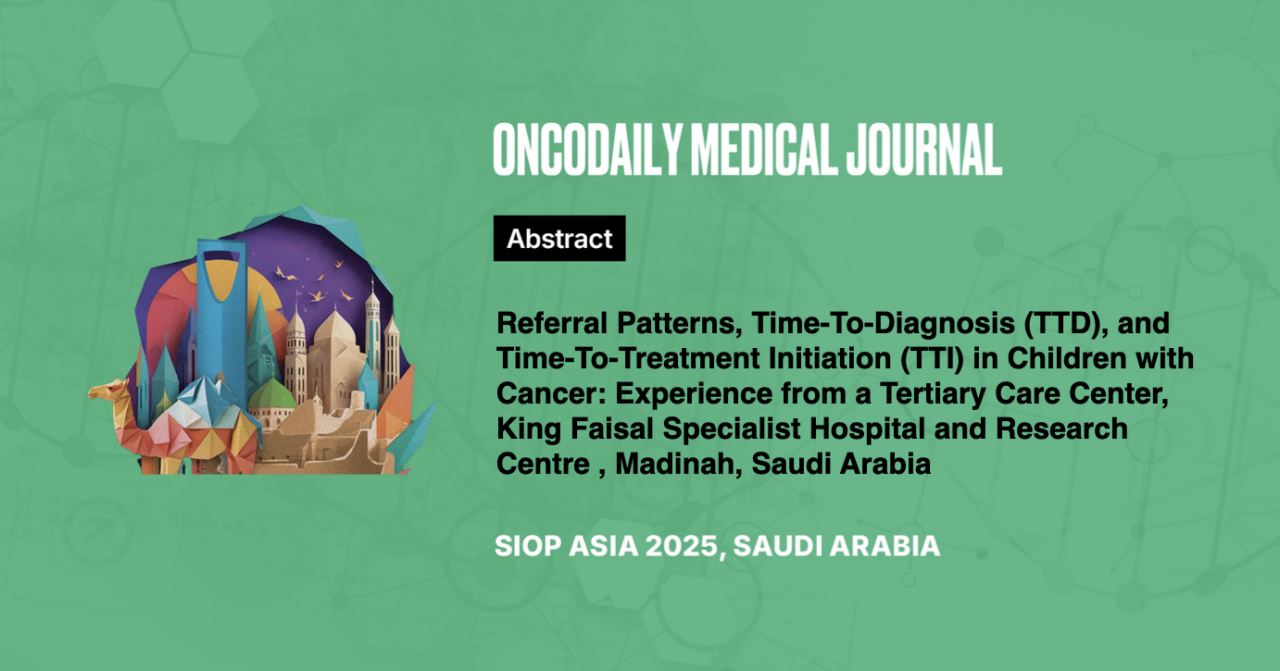Referral Patterns, Time-To-Diagnosis (TTD), and Time-To-Treatment Initiation (TTI) in Children with Cancer: Experience from a Tertiary Care Center, King Faisal Specialist Hospital and Research Centre , Madinah, Saudi Arabia
Abstract
Introduction: Timely access to tertiary care centers can positively impact outcomes in childhood cancer. Delayed access or unavailability of services impacts referral time, diagnosis, and therapy initiation.
Methodology: We conducted a retrospective EMR review of referral patterns, TTD, and TTI in children with cancer seen over two years at our center.
Results: 118 (92%) patients out of 129 total referrals analyzed were treatment naïve, of which 11 (8%) were referred to continue therapy; first-line (7) or second-line (4). 89% (115) of referrals were from the Western Region. The median age at diagnosis was 6.3 years (0.19 – 13.9) with 66 (51%) females and 63 (49%) males. The most common cancer diagnoses were leukemia, 70 (59%), solid tumors, 34 (29%), and lymphomas, 14 (12%). Median time from the onset of symptoms to a visit to a health center was 15 days (1 – 177).
Referral to a tertiary care center was 2 (1 – 47) days. All cases were accepted within 24 hours from the referral time. Median time to first encounter with an oncologist was 2 days (1 – 5). Median time for diagnostic biopsy after the first visit was 3 days (1 – 22) and TTD was 3 days (2 – 29). The median duration of TTI was 4 days (1 to 13) for all patients. A significant difference in referral patterns, TTD, and TTI when compared by gender, age, and cancer diagnosis was not seen.
Conclusion: Early access to a regional Childhood Cancer Center reduces patient waiting time for diagnosis and therapy initiation and contributes to favorable outcomes. Establishing collaborative workflows to facilitate timely imaging, diagnosis, and central venous access significantly impacts TTI. The availability of onsite up-to-date radiology & pathology services, Pediatric-ICU, interventional radiology, surgery, and subspecialized pediatric consultative services all contribute to positive outcomes for these patients.





